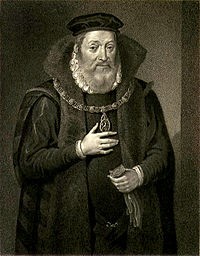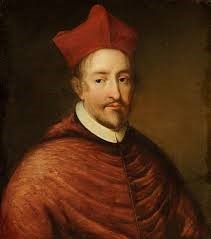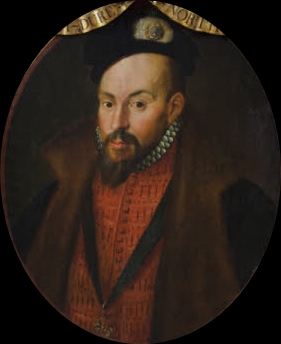Marie of Guise: Life Story
Chapter 5 : Appointment of the Earl of Arran
The politics of the following twenty years in Scotland, and its relationship with England, should be looked at through the prism of the long struggle for dominance in Europe between France and the Hapsburg empire (including Spain from 1519), which began in the 1490s and was not resolved for another two hundred years. Religion became a complicating factor in the 1560s but, although growing in importance, was not the paramount issue (other than for individual fanatics on both sides) in the period up until Marie’s death.
Once Scotland was left with a sovereign Queen, the choice of her future husband became a serious matter. If Scotland were forced into a union with England, then this would tend to favour the Hapsburgs as the old Burgundian and Spanish alliances with England were still preferred. If France could retain its Scottish ally, that would continue its traditional strategy of diverting English troops to the Border, and making incursions into France by England, either unilaterally or in support of the Empire, more difficult.

On the death of James V, two factions began to form amongst the Scottish nobles, although the strength and make up of each ebbed and flowed, and the situation was never straightforward. By and large, there was a faction that was pro-English and, in the case of some of the nobles, there was a desire to bring in a measure of Protestant Reformation, which James had firmly rejected. The second group preferred the traditional Auld Alliance with France, and were generally committed to maintaining the Catholic faith. However affiliations were not black and white, and there were Protestants who looked towards France, and Catholics who believed an accord with England was appropriate.
Marie’s own allegiance was always primarily to the advancement of her dynasty, through her daughter, the Queen of Scots, and the Guise family in France. There is no reason to suppose that she did not genuinely feel that Scotland would be better protected in alliance with France, but Scottish welfare was not necessarily her primary concern.

On James V’s death, the twenty-four year old James Hamilton, Earl of Arran and heir to the throne after the baby Queen Mary, came forward as the likely Regent. He was the great-grandson of James II. This immediately caused a dispute, as Cardinal Beaton claimed that James V had appointed a Regency Council consisting of Cardinal Beaton himself, the Earls of Huntly, Murray, Argyll and Arran, perhaps with Marie included. Arran denounced Beaton’s document as a forgery, but agreed to Beaton being named as Chancellor.
The rapprochement was short-lived and Beaton was arrested and sent to Blackness Castle at the end of January 1543. Arran was formally appointed Governor by the Estates of Scotland on 3rd March 1543 and Marie confirmed her allegiance to him on the following day.

One of Arran’s first acts, rather surprisingly, was to write to the English general, Lord Lisle, that he hoped ‘to put some reformation in the state of the kirk in the realm.’ The Catholic church in Scotland was in no better state than anywhere else in Europe, with many of its clergy leading blatantly immoral lives and using church lands and benefices to line their own pockets. In a country poorer than most, the scale of corruption was even more distasteful.
One of Arran’s early reforms was to allow the reading of the Bible in the vernacular from March 1543. He did not go so far down the road of Protestantism as to reject the Pope entirely, and by May was requesting papal protection and aid against England, whilst still treating with Henry for an alliance.




